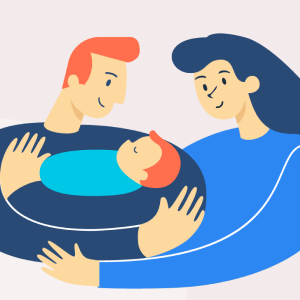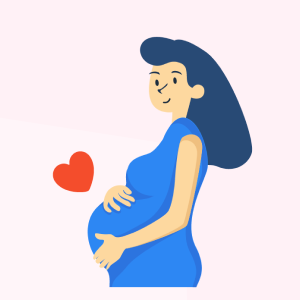Norethisterone
Fakta Disemak oleh Hello Doktor Medical Panel
This medication is used to prevent pregnancy. It is often referred to as the “mini-pill’ because it does not contain any estrogen. Norethindrone (a form of progestin) is a hormone that prevents pregnancy by making vaginal fluid thicker to help prevent sperm from reaching an egg (fertilization) and changing the lining of the uterus (womb) to prevent attachment of a fertilized egg. It also stops the release of an egg (ovulation) in about half of a woman’s menstrual cycles.
While the “mini-pill’ is more effective than certain other methods of birth control(such as condoms, cervical cap, diaphragm), it is less effective than combination hormone (estrogen and progestin) birth control because it does not consistently prevent ovulation. It is usually used by women who cannot take estrogen. To reduce the risk of pregnancy, it is very important to take this medication exactly as prescribed.
Using this medication does not protect you or your partner against sexually transmitted diseases (such as HIV, gonorrhea, chlamydia).
How should I take norethisterone?
Take this medication by mouth as directed by your doctor, usually once daily. Pick a time of day that is easy for you to remember, and take your pill at the same time each day.
Taking this medication after your evening meal or at bedtime may help if you havestomach upset or nausea with the medication. You may choose to take this medication at another time of day that is easier for you to remember. No matter what dosing schedule you use, it is very important that you take this medication at the same time each day, 24 hours apart.
It is best to begin taking this medication on the first day of your menstrual period. If you begin taking it on any other day, use an additional form of non-hormonal birth control (such as condoms, spermicide) for the first 48 hours to prevent pregnancy until the medication has enough time to work.
Continue taking one tablet every day. After taking the last tablet in a pack, start a new pack the next day. There is no break between packs, and you do not take any “reminder’ tablets (tablets without medication). Your periods may be irregular, or heavier/lighter than usual. You may also have vaginal bleeding (spotting) between periods. Do not stop taking your pills if this happens.
Pregnancy is more likely if you miss pills, start a new pack late, or take your pill at a different time of the day than usual. If you miss a pill, or take it 3 or more hours later than usual, or have diarrhea, or vomit soon after taking a pill, use a back-up method of birth control (such as condoms, spermicide) every time you have sex for the next 48 hours.
Ask your doctor or pharmacist about how to switch from other forms of hormonal birth control (such as patch, other birth control pills) to this product. If any information is unclear, consult the Patient Information Leaflet or your doctor or pharmacist.
How do I store norethisterone?
Norethisterone is best stored at room temperature away from direct light and moisture. To prevent drug damage, you should not store norethisterone in the bathroom or the freezer. There may be different brands of norethisterone that may have different storage needs. It is important to always check the product package for instructions on storage, or ask your pharmacist. For safety, you should keep all medicines away from children and pets.
You should not flush norethisterone down the toilet or pour them into a drain unless instructed to do so. It is important to properly discard this product when it is expired or no longer needed. Consult your pharmacist for more details about how to safely discard your product.
Know the precautions & warnings
What should I know before using norethisterone?
Before taking norethindrone,
- tell your doctor and pharmacist if you are allergic to norethindrone, oral contraceptives (‘birth control pills’), or any other medications.
- tell your doctor and pharmacist what prescription and nonprescription medications, vitamins, nutritional supplements, and herbal products you are taking. Be sure to mention medications for seizures such as carbamazepine (Tegretol),phenobarbital (Luminal, Solfoton), and phenytoin (Dilantin); and rifampin (Rifadin, Rimactane). Your doctor may need to change the doses of your medications or monitor you carefully for side effects.
- tell your doctor if you have recently had surgery or have been unable to move around for any reason and if you have or have ever had breast cancer; unexplained vaginal bleeding; a missed abortion (a pregnancy that ended when the unborn child died in the uterus but was not expelled from the body); blood clots in your legs, lungs, brain, or eyes; stroke or mini-stroke; coronary artery disease (clogged blood vessels leading to the heart); chest pain; a heart attack; thrombophilia (a condition in which the blood clots more easily); seizures; migraine headaches; depression; asthma; high cholesterol; diabetes; or heart, kidney, or liver disease.
- tell your doctor if you are pregnant, plan to become pregnant, or are breast-feeding. If you become pregnant while taking norethindrone, call your doctor immediately. Norethindrone should never be used to test for pregnancy.
- if you are having surgery, including dental surgery, tell the doctor or dentist that you are taking norethindrone.
- tell your doctor if you smoke cigarettes. Smoking may increase the risk that you will develop serious side effects of norethindrone.
Is it safe to take norethisterone during pregnancy or breast-feeding?
There isn’t enough information about the safety of using this medication during pregnancy and breast-feeding. Please always consult with your doctor to weigh the potential benefits and risks before taking this medication.
Know the side effects
What are the side effects of norethisterone?
Get emergency medical help if you have any of these signs of an allergic reaction: hives; difficulty breathing; swelling of your face, lips, tongue, or throat.
Stop using this medication and call your doctor at once if you have any of these serious side effects:
- sudden numbness or weakness, especially on one side of the body;
- sudden headache, confusion, pain behind the eyes, problems with vision, speech, or balance;
- pain or swelling in one or both legs;
- migraine headache;
- swelling in your hands or feet, rapid weight gain;
- symptoms of depression (sleep problems, weakness, mood changes);
- severe pelvic pain;
- chest pain or heavy feeling, pain spreading to the arm or shoulder, nausea, sweating, general ill feeling; or
- nausea, stomach pain, low fever, loss of appetite, dark urine, clay-colored stools, jaundice (yellowing of the skin or eyes).
Less serious side effects may include:
- mild nausea, vomiting, bloating, stomach cramps;
- breast pain, swelling, or tenderness;
- dizziness;
- freckles or darkening of facial skin;
- increased acne or hair growth;
- changes in weight;
- vaginal itching or discharge;
- skin itching or rash;
- changes in your menstrual periods, decreased sex drive; or
- mild
Not everyone experiences these side effects. There may be some side effects not listed above. If you have any concerns about a side-effect, please consult your doctor or pharmacist.
Know the interactions
What drugs may interact with norethisterone?
Norethisterone may interact with other drugs that you are currently taking, which can change how your drug works or increase your risk for serious side effects. To avoid any potential drug interactions, you should keep a list of all the drugs you are using (including prescription drugs, nonprescription drugs and herbal products) and share it with your doctor and pharmacist. For your safety, do not start, stop, or change the dosage of any drugs without your doctor’s approval, especially before using:
- Aprepitant, carbamazepine, felbamate, griseofulvin, HIV protease inhibitors (eg, ritonavir), hydantoins (eg, phenytoin), modafinil, nevirapine, rifampin, St. John’s wort, or tetracyclines because they may decrease norethindrone’s effectiveness
- Corticosteroids (eg, prednisone), theophylline, or troleandomycin because the risk of their side effects may be increased by norethindrone
- Beta-adrenergic blockers (eg, propranolol), lamotrigine, or thyroid medicines because their effectiveness may be decreased by norethindrone.
Does food or alcohol interact with norethisterone?
Norethisterone may interact with food or alcohol by altering the way the drug works or increase the risk for serious side effects. Please discuss with your doctor or pharmacist any potential food or alcohol interactions before using this drug.
What health conditions may interact with norethisterone?
Norethisterone may interact with your health condition. This interaction may worsen your health condition or alter the way the drug works. It is important to always let your doctor and pharmacist know all the health conditions you currently have, especially:
- seizures (eg, epilepsy)
- migraines
- heart problems
- kidney problems
- history of depression
- history of high blood pressure
- diabetes
- high blood cholesterol
- lupus, or blood clots
Understand the dosage
The information provided is not a substitute for any medical advice. You should ALWAYS consult with your doctor or pharmacist before using this medication.
What is the dose of norethisterone for an adult?
Usual Adult Dose for Abnormal Uterine Bleeding
2.5 to 10 mg orally per day for 5 to 10 days during the second half of the theoretical menstrual cycle.
Usual Adult Dose for Amenorrhea
2.5 to 10 mg orally per day for 5 to 10 days during the second half of the theoretical menstrual cycle.
Usual Adult Dose for Contraception
0.35 mg orally daily at the same time each day.
Usual Adult Dose for Endometriosis
5 mg orally per day for two weeks. Dosage should be increased by 2.5 mg per day every two weeks until 15 mg per day. This dosage may be continued for six to nine months or until annoying breakthrough bleeding demands temporary termination.
How is medication available?
Norethisterone is available in the following dosage forms and strengths:
Tablet, Oral: 0.35 mg.
What should I do in case of an emergency or overdose?
In case of an emergency or an overdose, call your local emergency services or go to your nearest emergency room.
What should I do if I miss a dose?
If you miss a dose of norethisterone, take it as soon as possible. However, if it is almost time for your next dose, skip the missed dose and take your regular dose as scheduled. Do not take a double dose.
Penafian
Hello Health Group tidak menawarkan nasihat perubatan, diagnosis atau rawatan.
Fakta Disemak oleh
Hello Doktor Medical Panel





















Komen
Kongsi komen anda
Ayuh jadi yang pertama untuk memberi komen!
Sertai Kami atau Log Masuk untuk menghantar komen